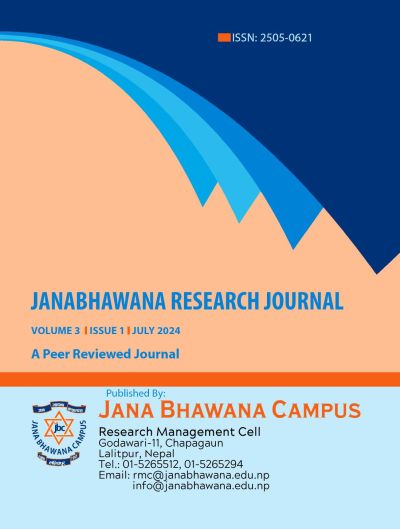Patterns of Internet use by the Teenagers: An Inquiry of School students of Nagarjun Municipality
DOI:
https://doi.org/10.3126/jrj.v3i1.68398Keywords:
internet usages, teenage, internet accessibility, digital literacyAbstract
The internet has changed the whole perspective of information dissemination and communication systems, making the world a global village through the World Wide Web. However, studies regarding the patterns of teenagers' use of the internet in Nepal in the light of their attitudes and purposes for using the internet are scarce. This study aims to identify the patterns of teenage students towards the use of the internet. This study adopted a descriptive research design with a quantitative approach, based on a sample of 91 students from government and private schools in Nagarjun Municipality, Kathmandu, Nepal. Data were collected from the selected students through questionnaires, analyzed, and presented with the help of tables and graphs. Respondents were selected using convenience sampling technique. Primary data were collected through a self-administered questionnaire. The study found that 49% of respondents spent 20-60 minutes daily on the internet. Mobile phones were the most common mode to access the internet. 24% of the respondents stated that the purposes of internet use were to seek general information and communication. Similarly, about 73% of teenagers learnt to use the internet themselves. Results showed that users frequently used the internet for educational and entertainment purposes. It also revealed that mobile phone usage leads to an increase in internet accessibility. The study recommended for the productive use of the internet in education. It provides meaningful data for developing policies on education and enhancing digital literacy in developing countries.
Downloads
Downloads
Published
How to Cite
Issue
Section
License

This work is licensed under a Creative Commons Attribution-NonCommercial 4.0 International License.
CC BY-NC: This license allows re-users to distribute, remix, adapt, and build upon the material in any medium or format for non-commercial purposes only, and only so long as attribution is given to the creator.




